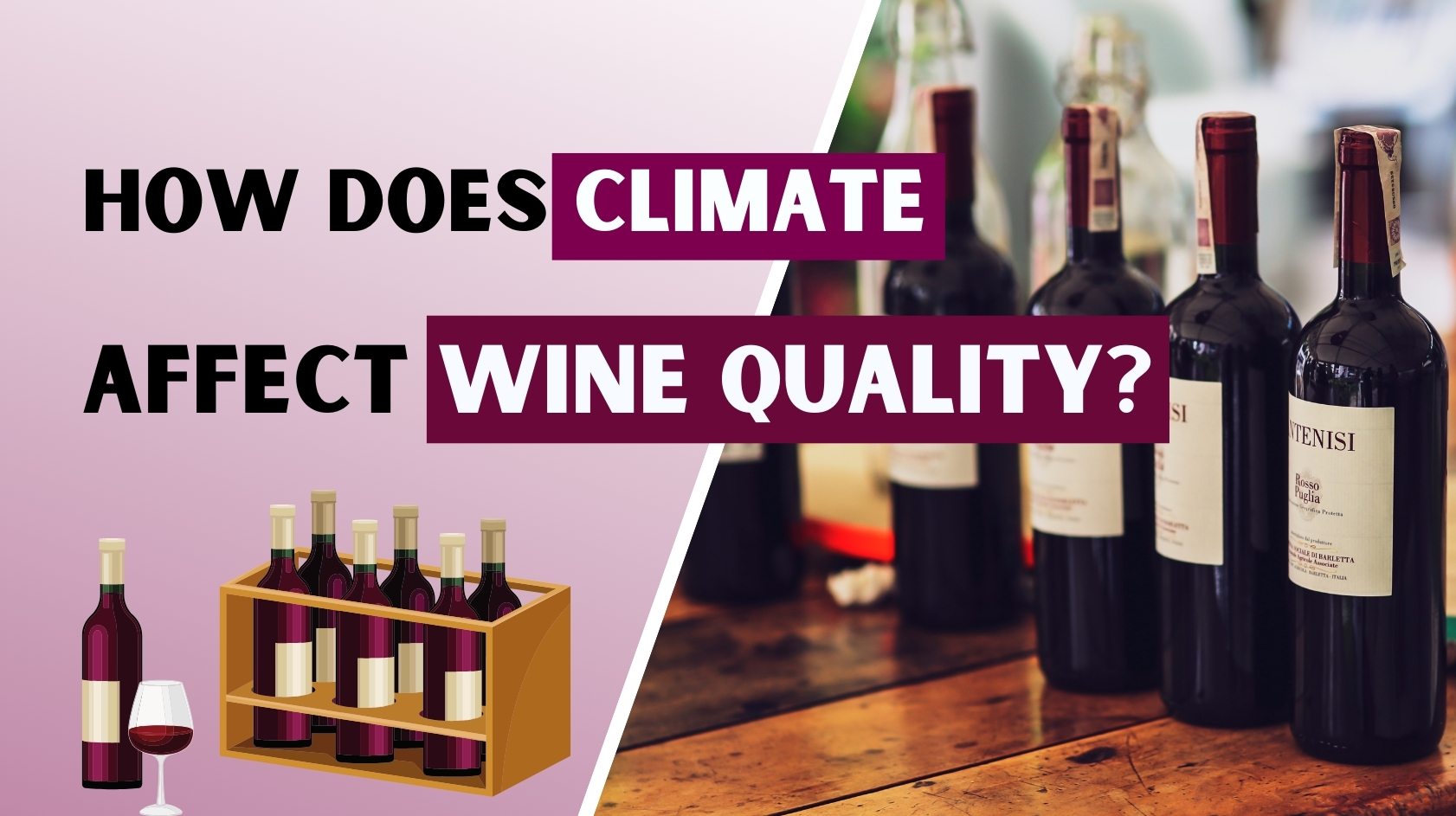How does climate affect wine quality?

How does climate affect wine quality?
Climate plays a crucial role in determining the quality and characteristics of wine. Factors such as temperature, sunlight, rainfall, humidity, and wind directly influence grape growth and, consequently, the flavor and quality of the wine produced. Understanding these elements helps both winemakers and wine enthusiasts appreciate how different climates shape the wines we enjoy.
Temperature: The Key to Grape Ripening
Temperature significantly affects how grapes develop.
Cool Climates: In regions with cooler temperatures, like parts of Germany and New Zealand, grapes ripen slowly. This results in wines with higher acidity, lower sugar levels, and more delicate flavors.
Warm Climates: Areas such as parts of Australia and California experience warmer temperatures, leading to faster ripening. Grapes from these regions often have higher sugar content, resulting in fuller-bodied wines with higher alcohol levels and riper fruit flavors.
However, excessive heat can cause grapes to overripen, reducing acidity and potentially leading to unbalanced wines.
Sunlight: Essential for Flavor Development
Sunlight is vital for photosynthesis, the process by which grapevines convert light into energy, promoting sugar accumulation in grapes.
High Sunlight Exposure: Regions with abundant sunshine, like parts of Spain and South Africa, tend to produce grapes with higher sugar levels, leading to wines with elevated alcohol content and richer flavors.
Limited Sunlight: Areas with less sunlight may struggle to fully ripen grapes, resulting in wines with lower alcohol, higher acidity, and more subtle flavor profiles.
Managing sunlight exposure through vineyard practices ensures optimal grape quality.
Rainfall and Humidity: Balancing Water Needs
Water availability and humidity levels significantly impact vine health and grape quality.
Excessive Rainfall: Too much rain, especially near harvest time, can dilute grape sugars, reduce flavor concentration, and increase the risk of fungal diseases.
Drought Conditions: While moderate water stress can enhance grape quality by concentrating flavors, prolonged drought can hinder vine growth and reduce yields.
High Humidity: Elevated humidity levels can promote the development of mold and mildew, necessitating careful vineyard management.
Implementing appropriate irrigation and disease control measures helps mitigate these challenges.
Wind: Influencing Vine Health
Wind can have both beneficial and detrimental effects on vineyards.
Positive Effects: Gentle breezes can reduce humidity around grape clusters, decreasing the risk of fungal diseases. Wind can also strengthen vine structures, leading to more resilient plants.
Negative Effects: Strong winds can cause physical damage to vines, disrupt pollination, and lead to uneven ripening.
Strategic vineyard placement and windbreaks can help manage wind exposure.
Climate Change: Emerging Challenges
Global climate change introduces new challenges to viticulture.
Rising Temperatures: Higher temperatures can accelerate grape ripening, leading to increased sugar levels and decreased acidity, potentially disrupting wine balance.
Extreme Weather Events: Increased frequency of heatwaves, frosts, and unseasonal rainfall can damage vines, reduce yields, and affect grape quality.
Shifting Suitable Regions: Traditional wine-growing areas may become less viable, while previously unsuitable regions, such as parts of northern Europe, are emerging as new viticultural zones.
To adapt, winemakers are exploring strategies like altering grape varieties, adjusting vineyard practices, and modifying harvest times.
Terroir: The Synergy of Climate and Geography
'Terroir' refers to the unique combination of climate, soil, topography, and human influence that gives a wine its distinctive character. Climate is a central component, dictating the suitability of grape varieties and influencing the sensory attributes of the wine.
Understanding and embracing the nuances of terroir allows winemakers to produce wines that authentically reflect their origin, offering consumers a diverse and enriching tasting experience.
In summary, climate profoundly affects every stage of grape development and wine production. By understanding these influences, both producers and consumers can better appreciate the complexities and qualities of different wines.










